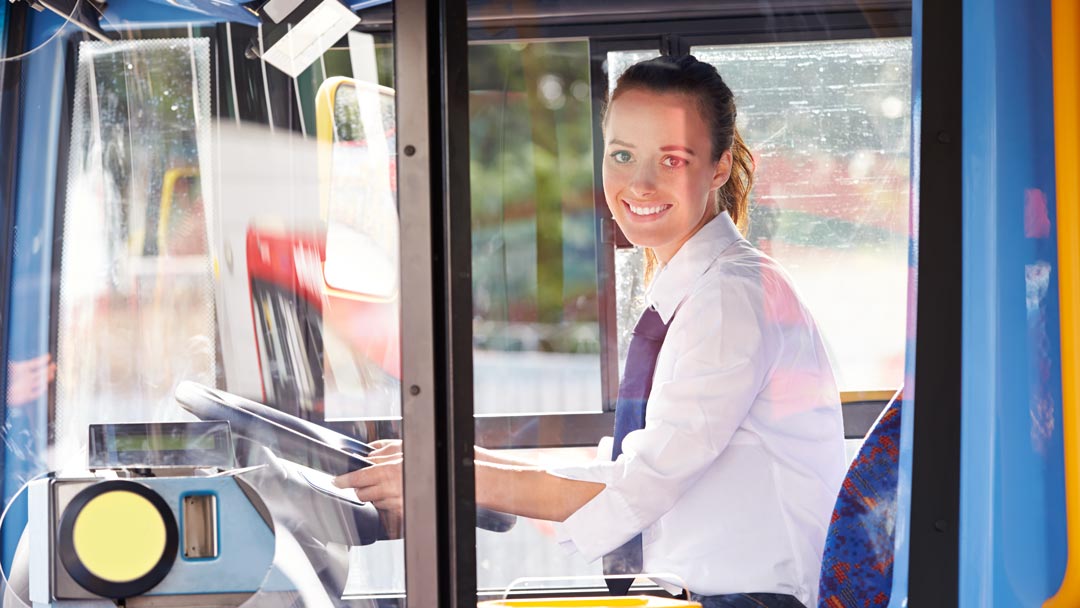Bus Operators: Why We Must Integrate ITS and Duty Allocation
This article first appeared in Intelligent Transport (Issue 1 March 2022)
Connecting Existing Systems Will Increase Operational Efficiency and Ridership, Reduce Vehicle Emissions and Improve Air Quality
Cities must maximise public transport to avoid a disastrous car-led Covid recovery. London mayor Sidiq Khan recently outlined this threat, citing reports that London was the world’s most congested city in 2021, and warning of “filthy air and gridlocked roads” if current trends continue.
But of course, people require compelling reasons to choose public transport over their private cars. During a recent webinar with Trapeze, Ian Wright from industry watchdog Transport Focus explained that passengers’ core priorities haven’t changed and that reliability of services remains fundamental.
It is clear that disruption is the enemy of reliable service delivery and ridership growth. What is less well understood, however, is the true cause of disruption and how this can be mitigated.
In major cities such as London, with huge complexity and near constant disruption, managing service delivery is an almost impossible task. However, disruption usually isn’t what people tend to think of: it’s not crashes or broken water mains. Most disruption comes from bus drivers.
This article outlines how integrating Duty Allocation System (DAS) and Intelligent Transport System (ITS) technologies will enable the mitigation of disruption, ensuring greater reliability of services to maximise trust in services and therefore ridership – while also reducing operating costs for bus companies.
Regulating Service: ‘The Impossible Job’
Industry veterans will often say that maintaining service regulation is the hardest task for bus operations staff, who must meet public expectation of regular service delivery in spite of continual disruption.
Consider a major city like London, where every single one of the two billion bus journeys each year require a driver sat behind the wheel. Bus drivers are as human as everyone else: they get sick, have family crises, become stuck in traffic and go on holiday.
UK bus driver sickness levels are often in the region of six per cent. Therefore, on any given day potentially more than 500 of London’s total 9,000 drivers may be absent. Now consider additional absence of up to 10 per cent through annual leave and the impact of planned and unplanned on-the-road disruption.
Bus operators understand that services never quite run to plan and are masters at managing absence and delivering in the face of these challenges. However, might it be possible to improve the efficiency of this process?
ITS or real-time service controllers typically don’t become aware of operational issues until a vehicle is running late – at which point it is already incredibly difficult to avoid impact on service delivery. This has profound implications for all involved: services slipping off the schedule create inefficiency; underutilised buses reduce revenue; and poor reliability undermines public confidence in bus travel.
However, by understanding that the majority of disruption begins in the bus operator’s traffic office, we can gain a head start in terms of addressing it. The solution lies in the linking of Duty Allocation and ITS technologies.


By understanding that the majority of disruption begins in the bus operator’s traffic office, we can gain a head start in terms of addressing it. The solution lies in the linking of Duty Allocation and ITS technologies.
Integrating ITS and Duty Allocation for Effective Service Provision
Integrating Duty Allocation and ITS solutions would enable ITS Service Controllers and bus Dispatchers to more effectively manage services by equipping them with the most accurate possible information, avoiding inefficiency and providing a precious head start in the event of disruption.
Let’s consider some of the ways in which this would help.
Information from Duty Allocation to ITS
When a driver is unwell, delayed by traffic on the way to work, or unable to start work on time for any reason, this information is known in the traffic office first. But where a mobile sign-on solution (such as Trapeze’s OnBoard) is used, the bus operator’s Duty Allocation System gains a precious window of opportunity in which to manage the issue.
With OnBoard, drivers can travel directly to their relief point without visiting a depot. Sign-on occurs in three stages: on the way to work; in location and ready; and getting on board the vehicle. Traffic office staff therefore have early warning of any drivers interrupted on the way to work.
Crucially, integrating DAS with ITS would enable this information to flow straight through to Service Controllers – empowering them to take immediate corrective action to minimise any impact on the public.
In large urban environments, where frequent disruption requires re-routing and service changes, integrating DAS and ITS systems would unlock an additional benefit: In the event that a driver is changed in the traffic office, DAS could immediately inform the ITS system so that Service Controllers would know which driver was working.
In instances where a curtailment is directed by the ITS system, the Service Controller would be able to identify any potential driver changeovers in the curtailed portion of the trip and thereby avoid the operational impact of instances where drivers are not in place to take over the bus.
Information from ITS to Duty Allocation
Meanwhile, information could also flow from the ITS system back into DAS, providing a critical dynamic feedback loop for operators. Traffic office staff would benefit from real-time validation of what is happening out on the road (something we know they require), enabling them to respond quickly to any issues, manage operations and ensure efficient delivery of the service that is actually required at all times.
This connection would also enable bus operators to respond quickly to any rapidly developing situations – for example, if changes originating from the ITS system require the planning of additional duties.
Additionally, bus operators could use logon and logoff information from the ITS system to understand drivers’ exact working time and any overtime, and thereby automate driver payment, ensuring accuracy and eliminating administrative workload.
Managing Electric Vehicles
The benefits of linking ITS and Duty Allocation systems will become even more compelling when electric vehicles are in wide operation.
Because the ITS system would know each electric vehicle’s battery charge and reach prediction, when a bus approaches the depot the ITS system could share this information with DAS, which could then prioritise depot charging, and also manage charging based on price of electricity fluctuations through the day.
Engaging Drivers
Finally, it is worth considering the potential benefits to drivers from linking ITS and Duty Allocation systems.
The primary benefit here relates to providing drivers with greater certainty in relation to services running to time, and shifts ending where and when they are supposed to – the importance of which should not be underestimated, given that bus drivers are legally bound to stay with their vehicles.
Unreliability is stressful and hugely problematic for bus drivers in terms of maintaining a healthy work/life balance. With the long running issue of driver attrition approaching crisis point in recent months, tools that improve the driving experience have never been more important.


Integrating Duty Allocation and ITS solutions would enable ITS Service Controllers and bus Dispatchers to more effectively manage services by equipping them with the most accurate possible information, avoiding inefficiency and providing a precious head start in the event of disruption.
Conclusion
As this article shows, integration between ITS and Duty Allocations Systems is vital for both bus operators and transport authorities.
This kind of integration is entirely achievable and could be delivered via a standard interface. Indeed, such an interface is already in operation in Singapore, where bus operators are able to use real-time end of trip predictions to identify upcoming delays and proactively adjust driver allocations where required.
The Singapore solution also enables allocation staff at interchanges to view end of trip arrival times from the ITS system, and use this information to fine tune upcoming trip start times, thereby improving headway management.
This technology already exists and could be delivered here in the UK. What is essential, however, is technology providers with deep knowledge of both the authorities and their ITS systems, and bus operators and their Duty Allocation tools.
By bringing these solutions together we can share existing data to unlock a whole raft of new benefits for multiple stakeholders. This integration will deliver improvements for bus drivers and operators, ITS Service Controllers and transport authorities – and of course for members of the traveling public who still demand reliable bus services at all times.
The integration of Duty Allocation and ITS solutions will deliver improvements for bus drivers and operators, ITS Service Controllers and transport authorities – and of course for members of the traveling public who still demand reliable bus services at all times.

About the Author
Paul Attenborough is a Programme Director at Trapeze Group specialising in the optimisation of transport solutions that make a real difference to the travelling public, through improvements in relation passenger information, schools transport management and the continually developing market of Mobility as a Service. Paul uses his energy and relentlessly positive attitude to encourage those around him to continue delivering great technology that transforms mobility.